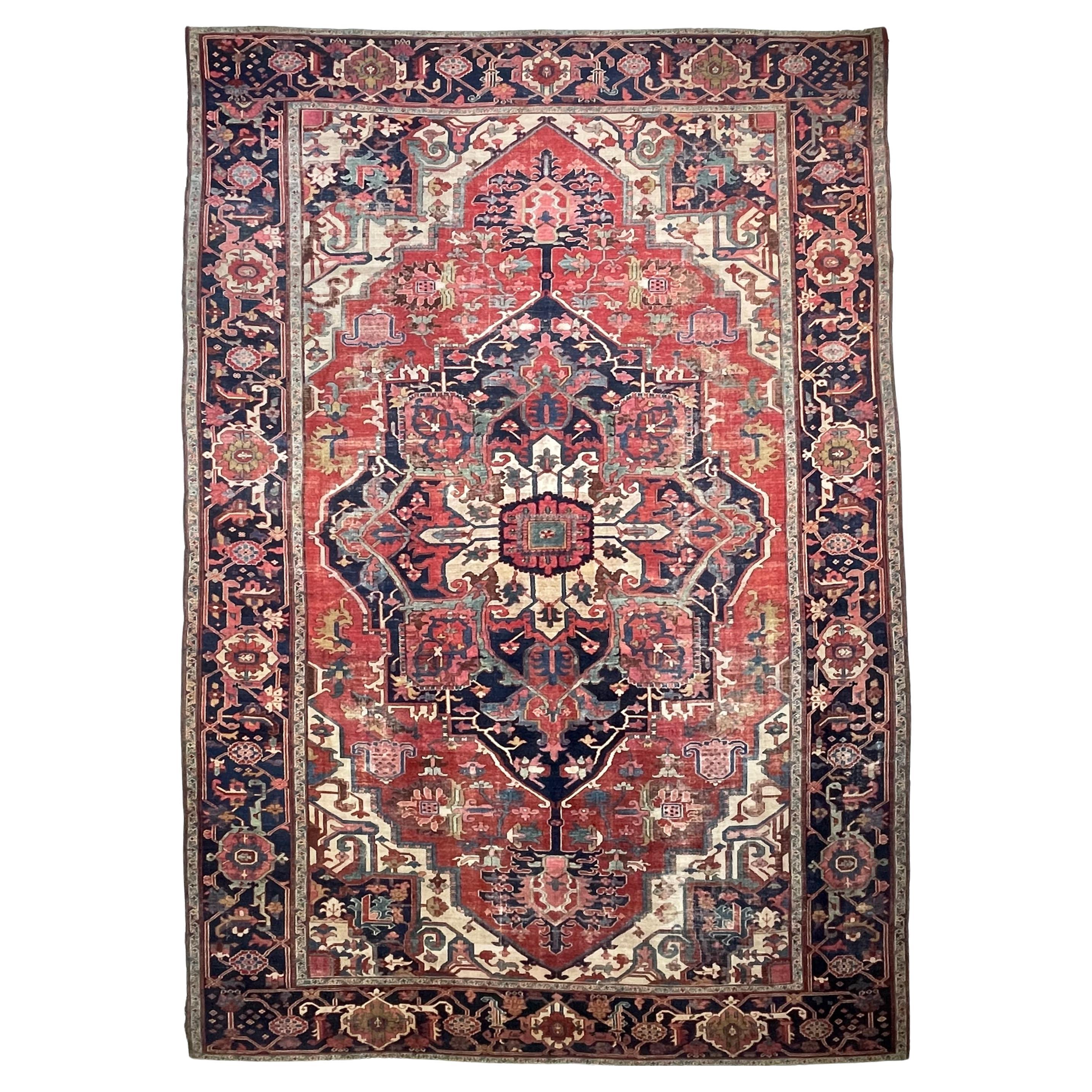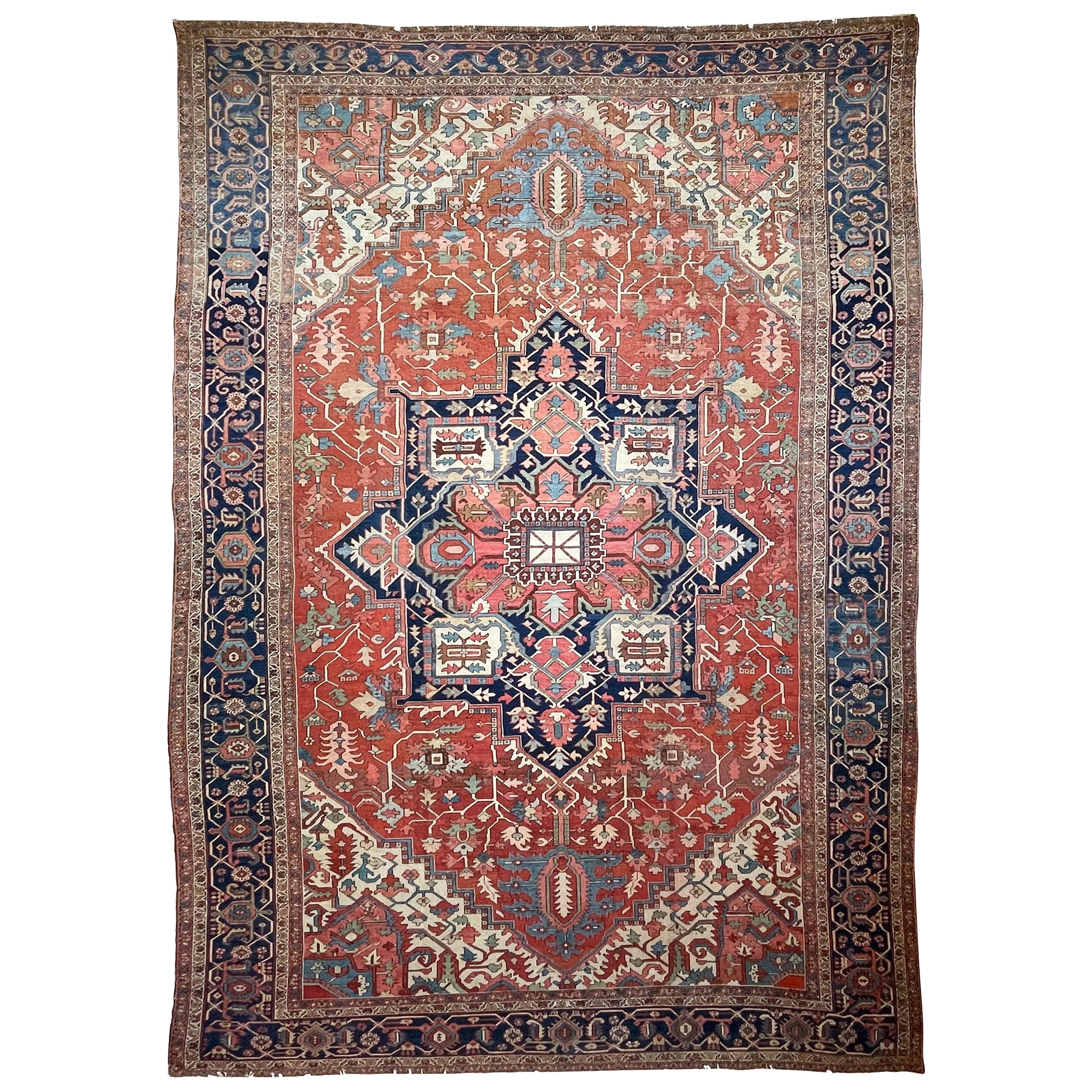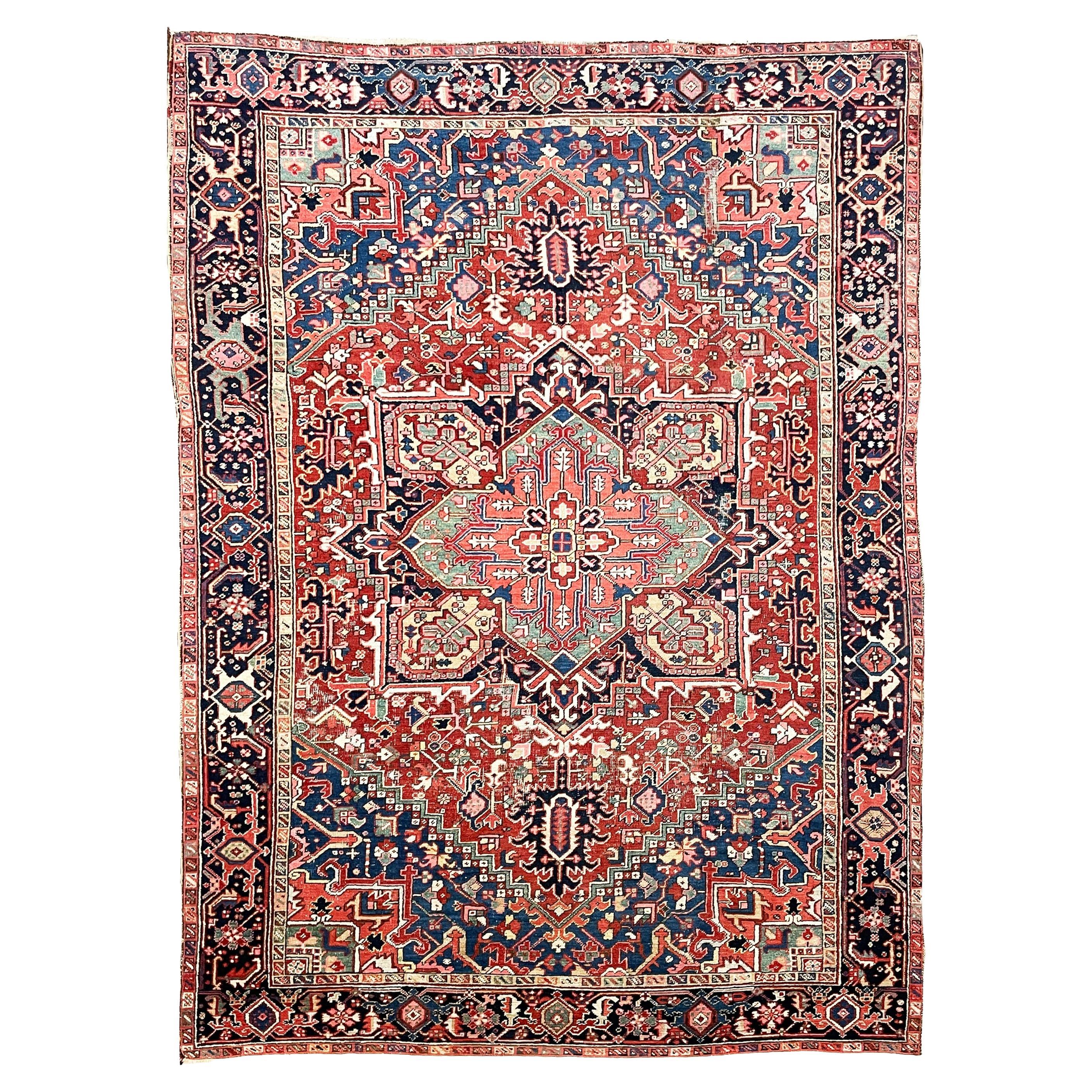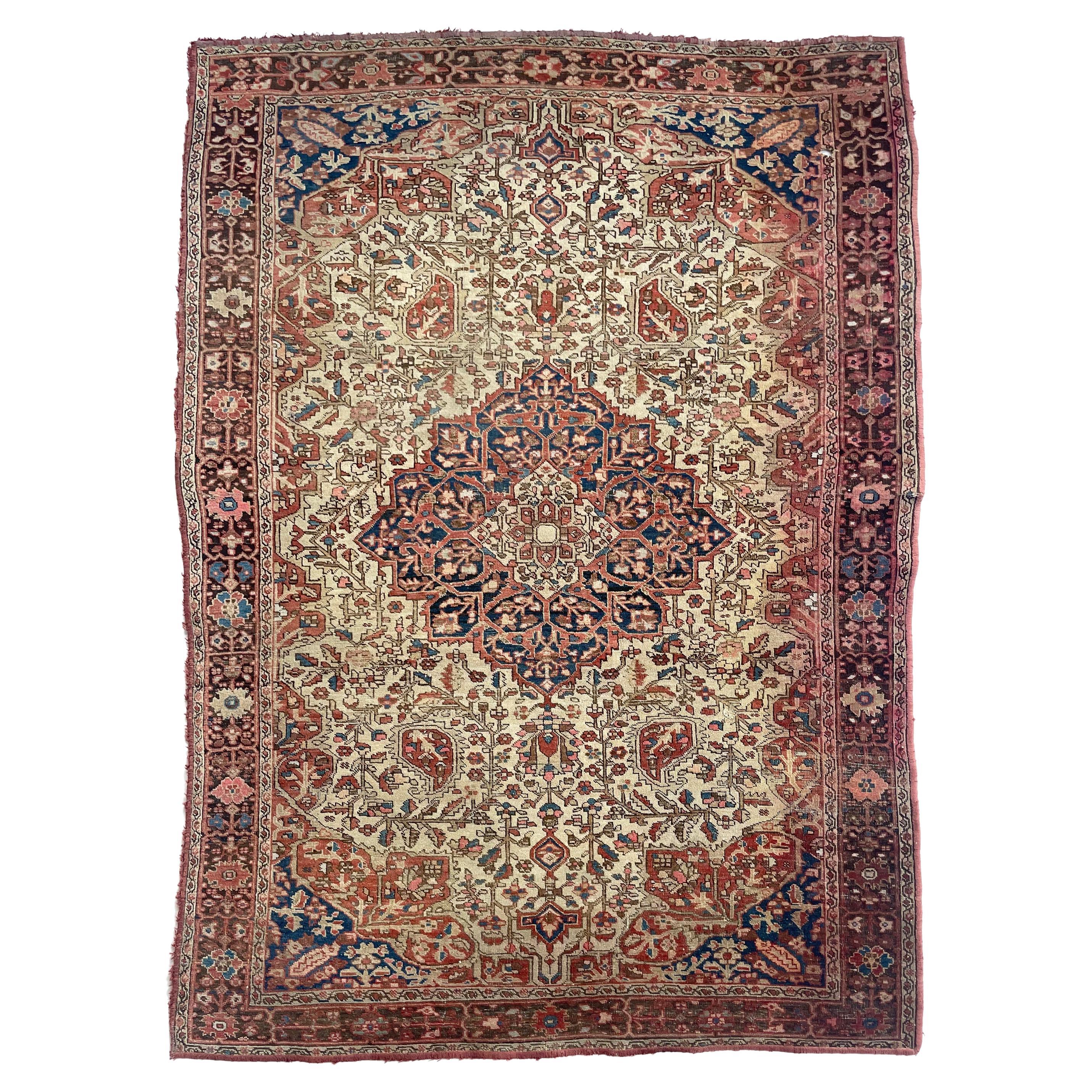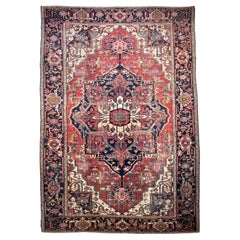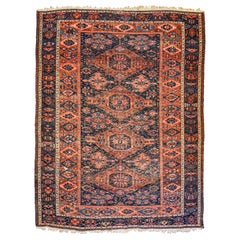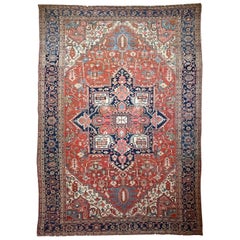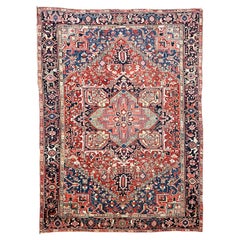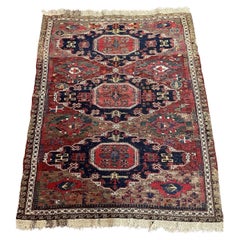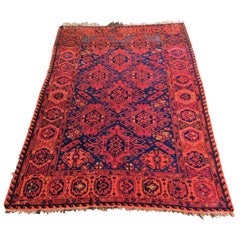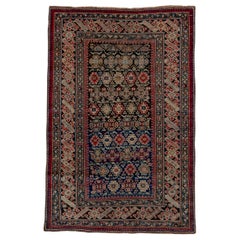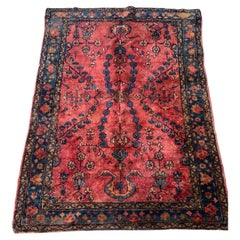Items Similar to One-of-one Over-sized Palatial Antique Sumac Textile Rug, c.1910
Video Loading
Want more images or videos?
Request additional images or videos from the seller
1 of 12
One-of-one Over-sized Palatial Antique Sumac Textile Rug, c.1910
$10,200
£7,728.72
€8,852.62
CA$14,447.15
A$15,765.19
CHF 8,269.11
MX$191,473.51
NOK 103,285.71
SEK 97,610.16
DKK 66,072.60
About the Item
Athos One-of-one Over-sized Palatial antique sumac textile
About: We simply will not come across another piece like this; age, the powerful tri-medallion design, the countless nomadic village and symbolic geometric motifs, perfectly age-given patina and condition, most of the original natural wool foundation of the kilim and salvaged ends are intact, the natural dyes have aged and softened perfectly, organic abrash and shifts of dyes from small-batch dyes, oxidized charcoal-espresso dyes from age, sensational neutral and tone-on-tone hues poke through where the wool has worn and all is shown is the goat-hair foundation still all intact, and of course the impossible to ignore size, just to name a few. Looking closely you will see the pinwheels of life, Harshang inspired motifs, mountain motifs running along, S hook motifs representing connection and unity, running water in one of the borders which is an ode to source and life, amongst other things, and so many other motifs that provide such a deep and character-rich textile. Incredible and rare indigo/navy blue field, wonderful rich yet matured reds, with ice and french blues, camel and earthy charcoal/espresso, antique beige, pops of pinky-salmon, sensational forest and greens, and more. Like all sumacs and flatweaves, this piece has a wonderful floppy handle and feel, and a custom-cut pad will add a nice body to it. This is truly a beautiful beast, with an all-encompassing nature to her. She is a true gem, and all in all, a real example of nomadic art that captures the essence of what these villagers and weavers do as artisans and lifelong masters of their craft.
Size: 10 x 13.4
Age: Century-Old C. 1910
Pile: Low with incredible patina with relatively nominal ancient old repairs.
This rug is one-of-a-kind, only one in the world, no others are available.
Because of the nature and age of these older/antique handmade pieces - irregularities, ancient old repairs/touch-ups, and age-related wear are likely to exist and are not considered defects.
This rug is also available with a custom cut pad (sold separately).
- Dimensions:Width: 160.8 in (408.44 cm)Length: 120 in (304.8 cm)
- Materials and Techniques:
- Period:
- Date of Manufacture:circa 1910
- Condition:Repaired. Wear consistent with age and use. Because of the nature and age of these older/antique handmade pieces, irregularities and age-related wear are likely to exist and are not considered defects.
- Seller Location:Milwaukee, WI
- Reference Number:1stDibs: LU7601231853882
About the Seller
No Reviews Yet
Vetted Professional Seller
Every seller passes strict standards for authenticity and reliability
1stDibs seller since 2022
5 sales on 1stDibs
Typical response time: <1 hour
- ShippingRetrieving quote...Shipping from: Milwaukee, WI
- Return Policy
Authenticity Guarantee
In the unlikely event there’s an issue with an item’s authenticity, contact us within 1 year for a full refund. DetailsMoney-Back Guarantee
If your item is not as described, is damaged in transit, or does not arrive, contact us within 7 days for a full refund. Details24-Hour Cancellation
You have a 24-hour grace period in which to reconsider your purchase, with no questions asked.Vetted Professional Sellers
Our world-class sellers must adhere to strict standards for service and quality, maintaining the integrity of our listings.Price-Match Guarantee
If you find that a seller listed the same item for a lower price elsewhere, we’ll match it.Trusted Global Delivery
Our best-in-class carrier network provides specialized shipping options worldwide, including custom delivery.More From This Seller
View AllEuropean Size Turn-of-the-century Old Distinct Antique Serapi Rug, c. 1900's
Located in Milwaukee, WI
Rare European Size Over a Century-Old DISTINCT Antique Serapi
About: Did You See This Size? Never again will we get this Elongated Palace size length in a more standard Room Size ...
Category
Antique 19th Century Serapi Rugs
Materials
Wool
Antique Tribal Sumak/Sumac/Soumak Carpet, c. 1910-20's
Located in Milwaukee, WI
Gorgeous Geometric Antique Sumak Carpet Navy, Coral & Rust Stunning Textile Sumac
About: STUNNING PIECE - All Encompassing Beauty right here with Village Motifs and Nomadic Essence...
Category
20th Century Tribal Rugs
Materials
Wool
Antique Northwest Serapi Heriz Tribal Dream Rug, circa 1910-1920's
Located in Milwaukee, WI
Antique Northwest Serapi Heriz Tribal Dream Rug, circa 1910-1920's
About: A truly one of one masterpiece, we will never see anything like it again with this...
Category
20th Century Persian Rugs
Materials
Wool
Antique Heriz Rug with Deep Denim Corners, c. 1930's
Located in Milwaukee, WI
Lovely Antique Rug with Deep Denim Corners, Corals, Salmon, Cloud-Blue
About: Really fantastic piece!
Size: 8 x 11.2
Age: Antique C. 1930's
Pile: Low/Medium with nice age-related p...
Category
20th Century Rugs
Materials
Wool
Antique True King Mighty Iconic Karaja Rug, circa 1920's
Located in Milwaukee, WI
True King Mighty Iconic Antique Karaja Deep Strawberry, Salmon, Denim, Seafoam
About: This is the king of the northwest - why? Because this village usu...
Category
20th Century Rugs
Materials
Wool
Fine Antique Ferahan Sarouk Rug, c. 1920's
Located in Milwaukee, WI
Super Fine Antique Ferahan Sarouk Soft Rust, Beige, Mellow Blues, Walnut
About: An amazing piece - extraordinary fine, lovely softer rustic feel.
Size: 4.4 x 6.4
Age: Antique, C....
Category
20th Century Sarouk Farahan Rugs
Materials
Wool
You May Also Like
Handmade Antique Caucasian Sumak Rug 4.5' x 5.7' 1900s - 1N89
Located in Bordeaux, FR
Authentic Distressed Antique Caucasian Sumak Rug
This is a handmade antique Caucasian Sumak rug, a rare flat-woven textile created in the early 1900s. Sumak weaving is a complex, non...
Category
Antique Early 1900s French Western European Rugs
Materials
Wool
Large Traditional Hand Knotted Tribal Wool Rug, circa 1920
Located in Miami, FL
Large tribal carpet or rug with magnificent vivid colors and interesting Art Deco motifs. A wonderful example displaying a vibrant tribal sensibility, carpets like this also draw upo...
Category
Vintage 1920s Uzbek Art Deco Central Asian Rugs
Materials
Wool
$2,900 Sale Price
61% Off
Rare Antique Caucasian Chichi Rug, circa 1900s
Located in New York, NY
This good condition eastern Caucasian scatter features the characteristic Chichi design of small side-hooked medallions and Maltese crosses on an abrashed royal blue ground, with a c...
Category
Antique Early 1900s Caucasian Tribal Caucasian Rugs
Materials
Wool
Handmade Antique Persian Lilihan Rug 3.5' x 4.7' 1920s - 2B41
Located in Bordeaux, FR
This handmade antique Persian Lilihan rug from the 1920s is a stunning example of traditional Persian artistry. Its vibrant colors, elegant floral motifs, and fine craftsmanship make...
Category
Vintage 1920s Persian Rugs
Materials
Wool
Handmade Antique Persian Khamseh Rug 5.5' x 8.5', 1880s - 2B78
Located in Bordeaux, FR
This exceptional vintage Persian Khamseh rug from the 1880s is a testament to the masterful artistry of tribal weaving. Its captivating design features a series of large, interconnec...
Category
Antique 1880s French Western European Rugs
Materials
Wool
Handmade Antique Caucasian Lori Pambak Rug 4.11' x 7.6', 1880s - 1N99
Located in Bordeaux, FR
Antique Caucasian Lori Pambak Wool Rug, Circa 1880s
This exceptional antique Caucasian Lori Pambak rug, hand-knotted in the 1880s, is a true masterpiece of nomadic weaving. The rug f...
Category
Antique 1880s French Western European Rugs
Materials
Wool
More Ways To Browse
Vintage S Hooks
Palatial Rug
Sumac Rug
Folk Art Hooked Rugs
Whirling Dervish
Caturegli Formica
Canadian Hooked Rugs
Hooked Rug Dog
Tai Ping Carpet
Folk Art Hooked Dog Rug
Cat Hooked Rug
Log Cabin Rug
Anatolian Grain Sack
Grenfell Rugs
Horse Needlepoint
Italian Rug With Fringe 4x6
Hermes Bath Mat
Retro Modern Chandeliers
